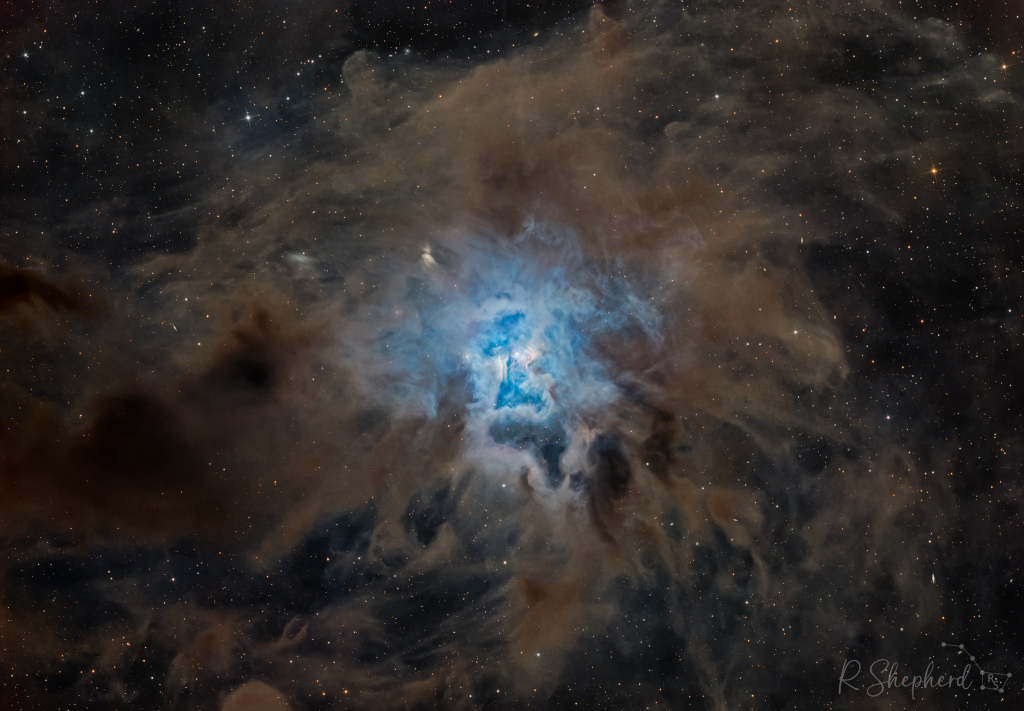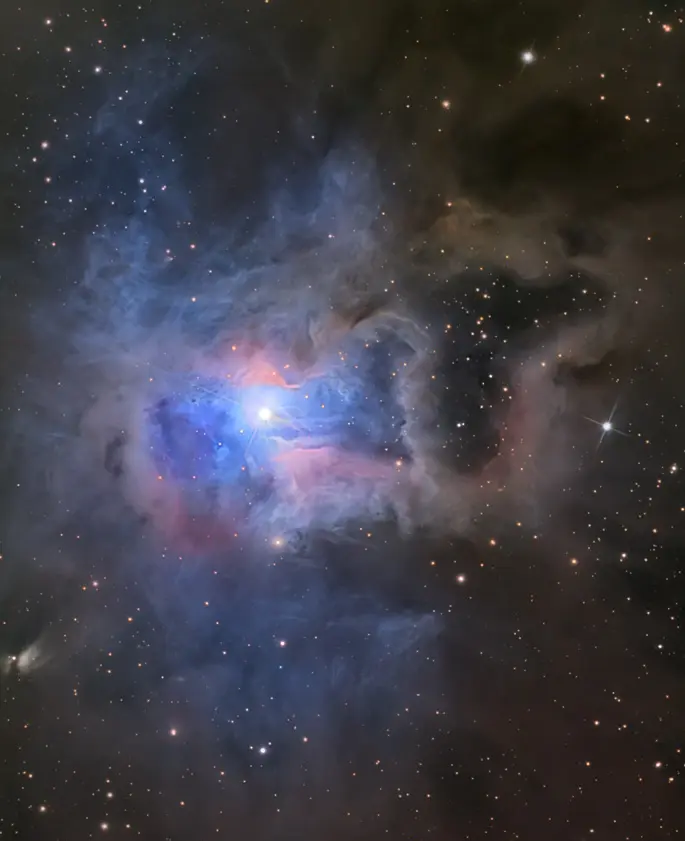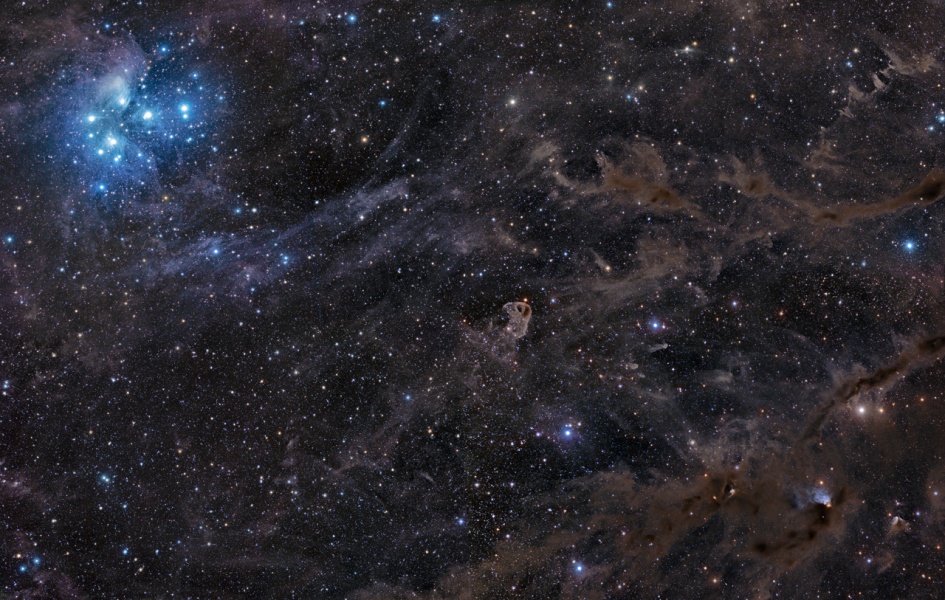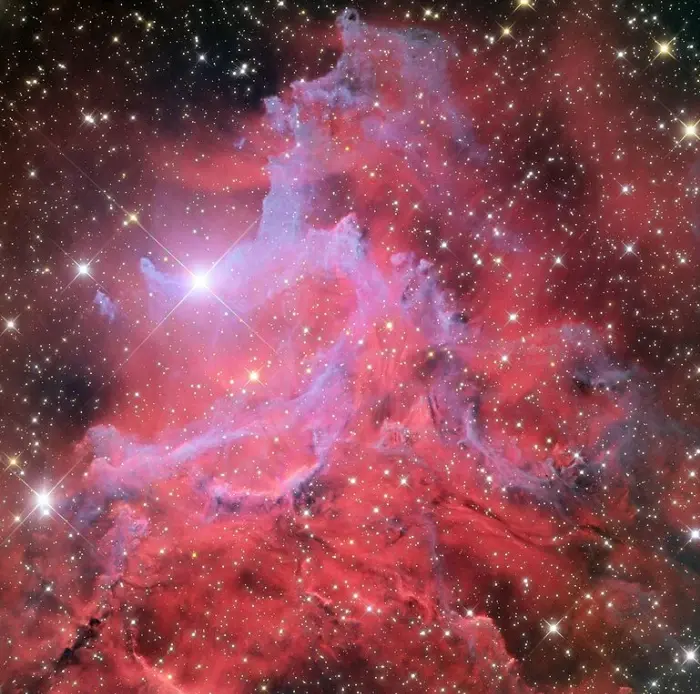Nice image, but do you understand this?
APOD Robot wrote:
Central filaments of the reflection nebula glow with a faint reddish photoluminescence as some dust grains effectively convert the star's invisible ultraviolet radiation to visible red light. Infrared observations indicate that this nebula contains complex carbon molecules known as PAHs.
Can you see any red light in the APOD? There was a link embedded in the caption, and I clicked it and got to this:
ESA Hubble wrote:
This close-up of an area in the northwest region of the large Iris Nebula seems to be clogged with cosmic dust.
...
Researchers studying the object are particularly interested in the region to the left and slightly above centre in the image, where dusty filaments appear
redder than is expected.
Is that dust redder than expected? That's not obvious to me.
In any case, ultraviolet light normally produces some levels of red hydrogen alpha light, when hydrogen rather than dust is ionized. We see hydrogen alpha (Hα) on the limb of the Sun during solar eclipses.
The hotter the star, the more ultraviolet light it emits. At ~5,800 K, the Sun is indeed considerably hotter than most stars in the Milky Way (since most stars in the Milky Way are cool red dwarfs), but it is much, much cooler than stars of spectral class B, like HD 200775, the illuminating star of the Iris Nebula. At spectral class B2V, the temperature of HD 200775 should be around 20,600 K. So while the Sun creates only tiny little Hα splotches, HD 200775 should produce a lot more. Yet the only picture that I know of that seems to show Hα in the Iris Nebula is this one by Adam Block:
So beautiful! But as I said, I've never really seen any pink at all in any other Iris Nebula images. It is possible that Adam Block has used an Hα filter to bring out these pink regions in this blue cosmic flower of a nebula. Normally, it takes stars of spectral class B1 to create an obvious pink Hα nebula. The Cocoon Nebula is ionized by a single star of spectral class B1V:
An interesting aspect of the Iris Nebula is all the thick dust surrounding it. Indeed, there is so much dust around it that we should conclude, at a glance, that the Iris Nebula is being illuminated by a star that was born in this exact place. We are seeing the birth nebula of the star HD 200775. I like this wide field picture that shows the dusty surroundings of the Iris Nebula:
The Iris Nebula and its dusty surroundings. Credit: The Astronomy Enthusiast.
Other newborn stars are also surrounded by a lot of dust, like for example the NGC 6726 complex in Corona Australis:
Like HD 200775 in the Iris Nebula, the stars inside the NGC 6726 complex are newborn. That is not the case for the Pleiades. Note that although the Pleiades cluster is surrounded by nebulosity, the dust is not particularly thick and dark around the cluster itself:
The Pleiades have simply blundered into a dusty region during their orbit around the center of the Milky Way, and the dust they illuminate is unrelated to the Pleiades' own birthplace.
A similar thing happened to O9.5V-type runaway star AE Auriage. It just blundered into a gas cloud during its headlong flight through the Milky Way, and now it has turned that cloud into a red nebula, mixed with tattered blue ribbons of illuminated dust.
And that is all from me today!
Ann
 NGC 7023: The Iris Nebula
NGC 7023: The Iris Nebula






